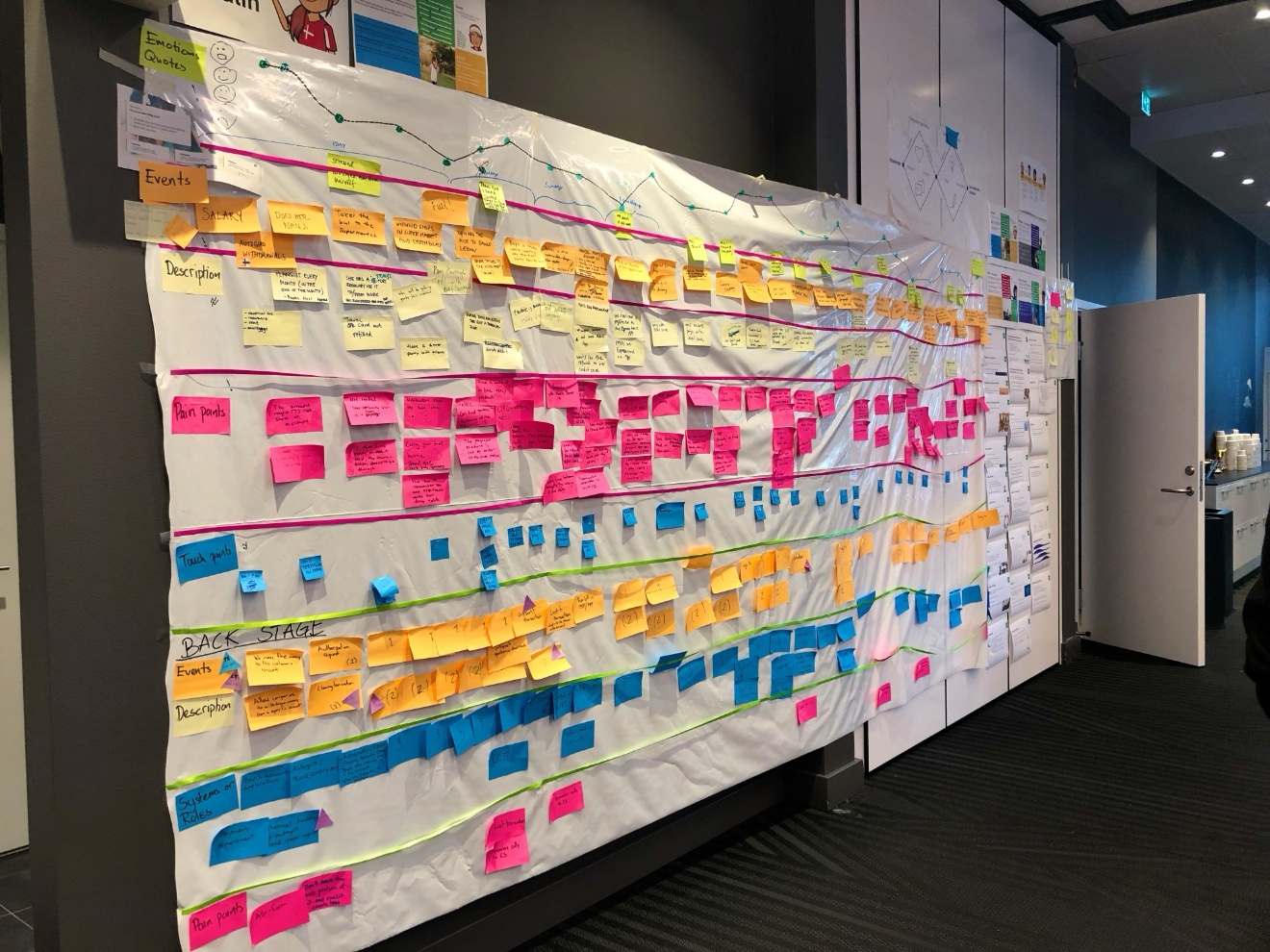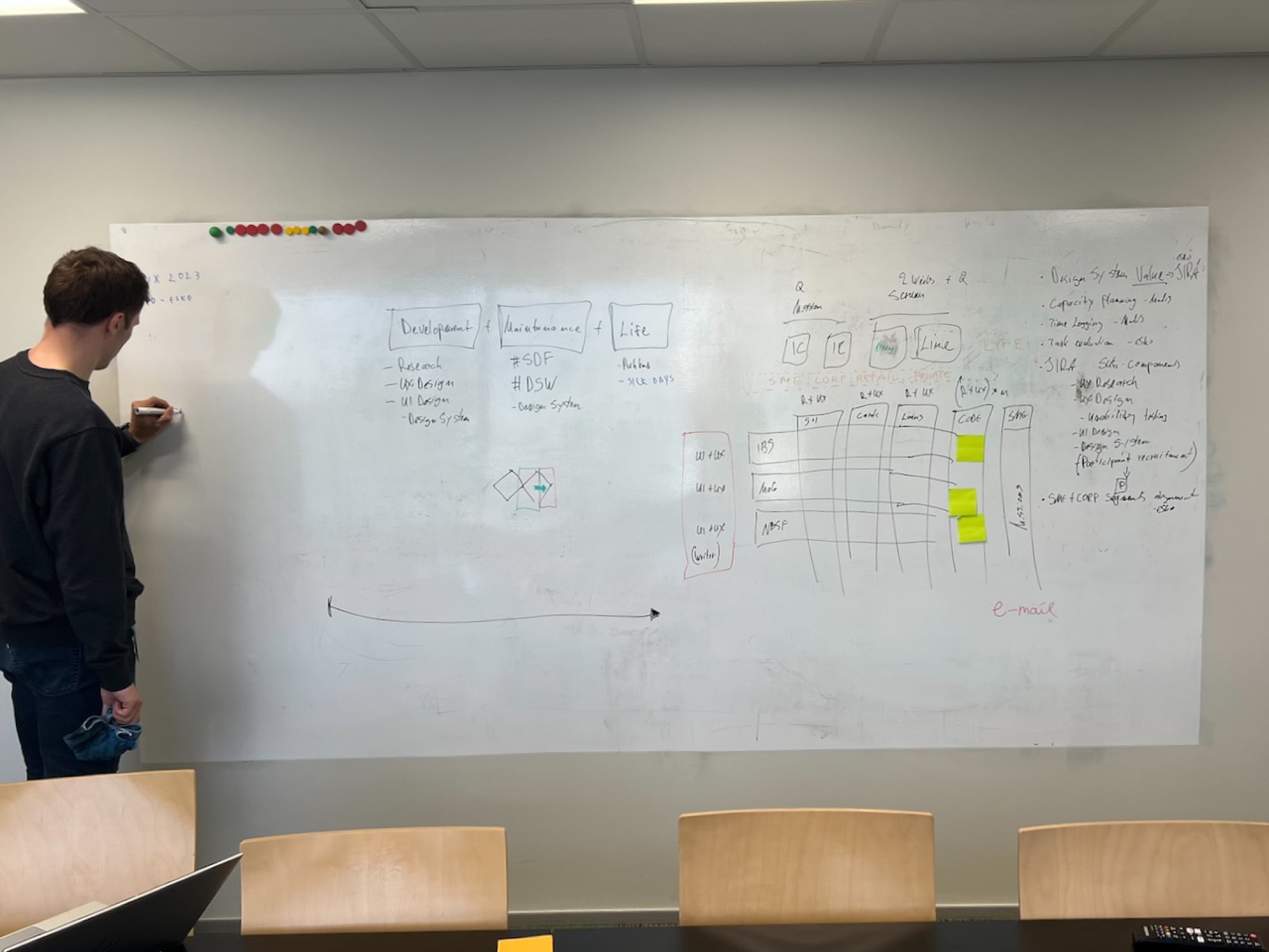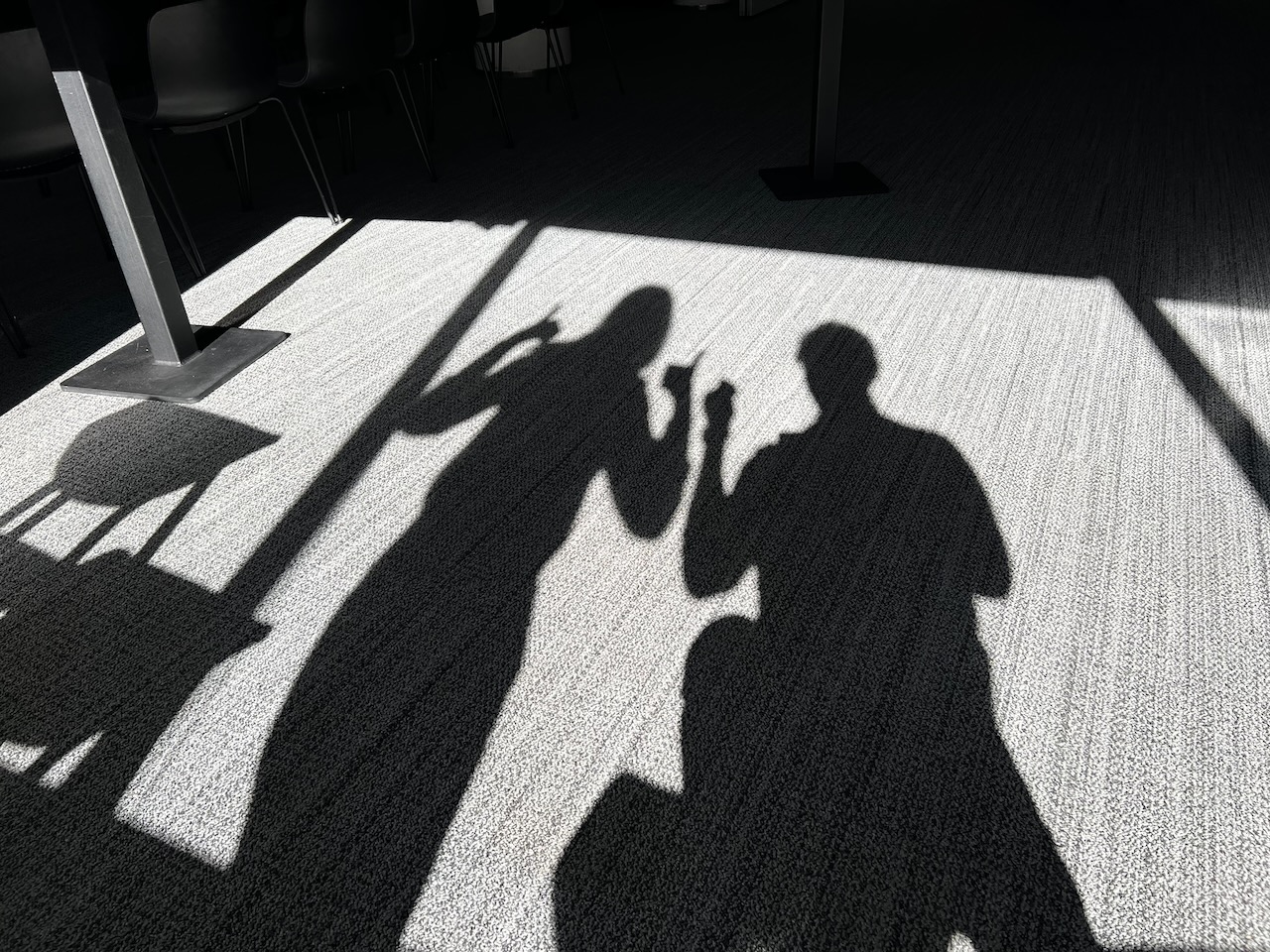Edison’s collaborative laboratory
Edison invested his first major income into creating his laboratory. To make it successful, he hired engineers to work there. Everyone, including Nikola Tesla, worked under the condition of surrendering all patent rights to Edison.
When “inventing” the light bulb, his laboratory engineers were crucial. Their task was to test all previously described materials to find one stable enough to glow under electric power in a vacuum. Even though the public knew Edison as the inventor of the light bulb, his success was backed by numerous workers and even more previous experimenters.
Edison understood that knowledge and invention had to be documented—he tied engineers’ salaries to properly documented and accepted patents surrendered to his name.
I have not failed, not once. I’ve discovered ten thousand ways that don’t work. – Thomas Alva Edison 1
Modern design teams follow the same pattern
Modern design teams operate under the same principle of collaborative design. While researching, planning, and designing products, teams conduct extensive research to learn about market trends, competition, technology, and academic discoveries, as well as external input from numerous specialists and experts.
Our design system exemplifies this collaborative reality: for each component, at least seven people contribute their expertise. Creating error states for input fields alone requires:
- Requirements gathering
- UI component design
- Accessibility features
- Usage guidelines
- UX writing
- Front-end development
- Acceptance testing
- Migration planning
Each interface element builds on countless previous iterations, user insights, and collaborative discoveries. This design collaboration process ensures better outcomes than individual work.
From betrayal to generous leadership
As a rookie designer in an advertising agency, I was proud of my imagination and creativity, always seeking novel solutions to attract colleagues’ and customers’ attention with surprises.
On one occasion, I came up with an ad concept for a major sports car brand—a guerrilla campaign2 planned for seemingly random places throughout the Baltic. I was surprised when I learned that the creative director had presented everything to management as his idea and work. I felt deeply betrayed and stolen from.
This experience has stayed with me as a reminder to always generously give credit within the team to all the people involved. It shaped my approach to design leadership and collaborative culture building.
Now, in a leadership role, the story has flipped. I publicly credit people whenever possible, naming individuals behind projects and tasks. In many situations, stakeholders may not realize the importance of what the team has accomplished—it’s my duty to explain and interpret this in our organizational context.
When my long-repeated messages start to echo back from leadership, I know we’ve been successful and change is happening.
Collaboration in practice
This pattern of hidden collaboration extends beyond historical laboratories into modern design studios. One of our biggest success stories involved a major project where the team initially planned only to use designers to make interfaces beautiful.
As I learned about the project, I convinced leadership to allocate more time for full-scale strategic user research to gain a deeper understanding of customers’ expectations, needs, and perceptions. The user researcher involved UX designers and product development team members to speed up data gathering and analysis.
Even though she was responsible for final data delivery, research became a highly collaborative effort that informed the following prototyping iterations.
UX and UI designers worked side by side with business representatives and developers to iterate quickly. One major challenge was making the product perceived as a joy to use—a delightful private celebration of improving customers’ lives step by step.
Customer journey maps uncovered this need, but the solution required full team collaboration. After 17 months of research, ideation, and countless design iterations through parallel development, we launched the product. Over 50 team members, either directly or indirectly, influenced the product outcome and its design.
Timeline, budget, and technical limitations shaped the final result, but so did the team’s commitment to delivering the best product possible.
The danger of superstar designers
I’ve witnessed the opposite approach—superstar designers who take credit and brag about their input without mentioning others. They opt for presentable materials and skip mandatory procedures that don’t enable public recognition.
This leads to information hoarding and attempts to make themselves indispensable. In the long term, this creates design debt and increased costs, as mandatory tasks such as documentation and reporting are neglected. Eventually, teams become distrustful, and the superstar feels isolated from team culture.
This anti-collaborative approach destroys the design culture that enables innovation.
The hidden nature of design work
Design work involves being an intermediary between creation, previous authors, and end users. External influences, client feedback, and academic research all contribute to our creation.
The further we go on the value chain from the customer, the more hidden the work becomes. We all have our stories and direct influences for success, but eventually, the organization owns the product, and the team deserves full credit for collaboration.
Teams that hoard credit create cultures of secrecy and competition, where breakthrough ideas die in isolation. The healthiest design teams recognize each other’s input and effort openly.
Building a collaborative design culture
Design, at its heart, is an act of generosity—sharing credit as freely as we share ideas. Here’s how to build this culture:
- Publicly acknowledge individual contributions in team meetings and stakeholder presentations
- Document collaborative processes to show how ideas develop through teamwork
- Create systems for shared credit in project deliverables and case studies
- Encourage cross-functional collaboration from project initiation
- Measure team satisfaction alongside project success metrics
Advance your career and leadership
Subscribe and get actionable insights sent to your inbox.
- Practical frameworks from years of experience
- Case studies and implementation guides
- Career development strategies for professionals
I respect your privacy. I will never share your email, and you can unsubscribe anytime.
“Quote Origin: I Have Gotten a Lot of Results! I Know Several Thousand Things That Won’t Work – Quote Investigator,” Quote Investigator, July 31, 2012, https://quoteinvestigator.com/2012/07/31/edison-lot-results/. ↩︎
“Guerrilla Marketing,” Wikipedia, https://en.wikipedia.org/wiki/Guerrilla_marketing. ↩︎




